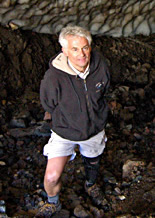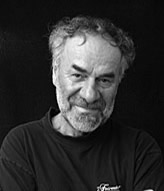| |
|
We began the morning easily enough, putting in our whitewater rafts alongside a mellow section of the Upper Klamath River below the John C. Boyle Dam. Our short warmup included paddling along a gentle stretch of river where pelicans – just like the day before – were lounging on and alongside mostly submerged tree branches.
It was Day two of our three-day multi-sport trip on the Upper Klamath. The day before, our group of 17 and four guides had put-in alongside the river off the Topsy Grade Road not far below the John C. Boyle Dam. Our team of six paddlers – dubbed the Retro Team because all of us are 60-plus years old, had already done this stretch of river, notorious for its extremely challenging rapids, so we were ready. Under the instruction of our guide, Micah Hayes, we had been tutored in paddling as a team. It was time to focus. Ahead was Caldera, a notorious, boat-busting Class 4-plus rapids.
| |
.jpg) |
|
.jpg) |
|
| |
.jpg) |
|
.jpg) |
|
“Paddle forward,” Micah ordered. Then, “Get ready!”
Ready or not, all hell broke loose. Walls of frothy, pounding whitewater poured over us. Waves rocked the raft from side-to-side. Abruptly the raft dipped, walls of water washed over us. The river seemingly disappeared, hidden by the maze and chaos of turbulence.
“Hold on!” shouted Micah, so we did, reaching inside the raft to grab hand holds.
“Paddle!” she commanded, so back on the side of the raft we scooted, dipping our blades in the river, trying to stay in sync with each other as we paddled forward.
“Get Down! GET DOWN!” she yelled even louder, so we slid down to the floor of the raft, holding on as walls of water rumbled us randomly hither and thither.
We followed orders as Micah, from her perched position at the back of the raft, angled around semi-hidden rocks and obstacles. Eventually, after more ‘get’ commands, came a softer, “Relax.”
| |
.jpg) |
|
.jpg) |
|
Our crew, like those on the other rafts, did just that as we entered calm waters. When someone shouted, “High Five,” we all raised our paddles high, clapping them together in unison. We celebrated, ready and aware that there was more to come, including two more Class 4 rapids - Satan’s Gate and Hell’s Corner – and a series of wildly turbulent Class 3 rapids – Triangle, Upper and Lower Stagecoach, Branding Iron, Dragon and Jackass. After more of these thrills, we paused for lunch.
Micah joined the other guides – Jorge Esquivel, Reynoldo “Rey” Vargas, and Vikram “Vik” Joshi – in preparing a sumptuous lunch. Incredible meals and snacks were the norm over our three days.
Lunch was followed by more rumbling rapids – Scarface, Dance Hall, Ambush, Bushwhacker and Rainbow Rock. After Snag Island, we pulled to the riverside and left our rafts while the guides tied them to trees and rocks. A path not noticeable from the river led up to an open area - the “Upper Klamath Bush Camp.” The camp has tents atop wooden platforms, a kitchen, an outhouse, tables and showers. The company we were rafting with, Ashland-based Momentum River Expeditions, has an agreement with the Bureau of Land Management to operate the camp during the rafting season. When the season ends, all their camp facilities are packed and trucked to Momentum’s Ashland warehouse.
| |
.jpg) |
|
Along with Larry Turner and me, the other members of our Retro Raft Team were Carlton and Kathy Cook from Houston, Texas, and Jim and Sabrina Brooks, ex-pats who live in Mexico.
It was a diverse group. Micah is from Boston. Vik is from India. While Jorge and Reynoldo are from Costa Rica. Other paddlers included a Wall Street stockbroker who was with his daughter, celebrating her high school graduation. She’ll start college at the University of Southern California this fall. A large family group adventuring with us lives Alameda, in the San Francisco Bay Area. Two others were from Portland. |
|
While the guides prepared appetizers and, later, another delicious dinner, we relaxed, sipping Rogue Valley wines, fly fishing, playing corn hole, swimming in the river, showering and sharing stories of past adventures.
The day had actually started hours earlier. We had been ferried across the river and taken a trail up to the Topsy Grade Road where other guides had driven in with mountain bikes. From there it was six miles of biking or hiking to where our second round of whitewater above Caldera had started. There was more to come.
It was our final day on the trip - to test what we’d learned.
| |
.jpg) |
|
.jpg) |
|
For two days we were part of raft teams that paddled through the Upper Klamath River’s wild section. It’s notorious for its Class 4-plus and Class 3 rapids - where pounding, exploding walls of water repeatedly left us totally buried under avalanches of water. Today we were in one-person rubber kayaks. For the final several miles to trip’s end, 17 of us would see and experience the Klamath’s power from our “rubber duckies.”
But first, it’s time to briefly backtrack to the beginning. Our journey from Ashland to the put-in launch site below the Boyle Dam began on a Sunday morning. After the drive, we loaded into rafts, five or six per raft, each with a guide controlling a set of oars. That first day we paddled several hours, weaving our way through Caldera, Satan’s Gate and Hell’s Corner, before stopping at a hidden-from-the-riverside stop and making a short walk to the Upper Klamath Bush Camp for snacks and dinner. It’s important to again mention that over the three days we were treated to delicious meals prepared by our four guides.
Monday morning, before our second round in the rafts, we were ferried across the river. From there we hiked to a dirt road where more Momentum crews were waiting with mountain bikes. In preparation for an upcoming multi-day backpack, I opted to hike most of the six miles of bumpy, rolling road, joining the others at the put-in site above Caldera. From there we enjoyed a second day of adrenaline-rousing, wildly exciting rapids back to camp.
Tuesday, our third and final day, started lazily. Because it’s downriver from the Boyle Dam, where water is released at 10:30 each morning to recharge water levels, it was about 12:30 before water volumes at camp were high enough to safely paddle. From camp we re-boarded the rafts, rumbled through a series of Class 2 and 3 rapids - Wells Fargo, the aptly named Osprey (where an osprey nest overlooks the river), Red Sparrow, and Stateline Falls, to a riverside stopping point where a kayak-toting truck/trailer was parked. We loaded into our rubber kayaks, also affectionately called rubber duckies.
From a ducky, with seats just barely above water level, every wave looks bigger than from the sidewall of a raft. Rapids are more intimidating. Staying dry is not an option - that’s part of the fun. Even in Class 2 and 1 rapids our duckies pinged and ponged, rattling, soaking us through and through.
The kayaking was challenging, exhilarating and exciting. Over the next hour-plus our group and guides, including one who followed us in a raft – smacked and whacked through a series of frothy rapids.
Too soon the takeout point came into sight. Just around the corner was the beginning of Copco Reservoir, where the river backs up before the Copco 1 and Copco 2 dams. Our three-day adventure was nearly over. After another snack, we repacked our gear and loaded kayaks onto trailers for the 90-minute drive back to Ashland.
| |
|
.jpg) |
|
|
Rafting and paddling the Upper Klamath is more than slamming through gut-busting rapids. Along the way we’d been charmed by the gathered pelicans. We saw bald eagles, including, unusually, two sitting side-by-side on a riverside snag. Great egrets had glided overhead. Wing-pumping golden eagles flew low over the river. We paddled past forests of ponderosa pines, oaks and other river-hugging trees. The night sky was electric with shimmering, glowing stars.
Twice we paddled past Salt Caves, a place of years-ago controversy. In the 1980s, Pacific Power proposed adding the 120-foot high, 80-foot-long Salt Caves Dam between the Boyle and Copco dams. If built it would have diverted water through a 22,000-foot-long canal. Conservation groups were adamantly opposed,
insisting it would destroy nesting habitat for bald eagles and peregrine falcons, adversely impact trees and plants, and create other environmental havoc. Tribes feared a dam would destroy an area regarded as sacred. The section of the Klamath renowned for its whitewater rafting would be tamed. The dam was never built.
But our trip is one that won’t be possible in future years. The removal of four Klamath River dams is scheduled to begin with the Iron Gate Dam in 2023 followed by the Copco 2, Copco 1 and the Boyle dams in 2024. When unregulated and free-flowing, it’s expected that whitewater rafting will only be possible during spring high water flows.
I’ve made several Upper Klamath River trips over several years. All the others had been thrillingly wild and crazy one-day journeys. This three-day multi-sport journey, included two rounds through the wild section, was full of excitement, but also offered quiet times to reflect and enjoy the river with new friends.
Until the dams are removed, any trip on the Upper Klamath River promises a damn good time.
If You Go
For information about Momentum River Expeditions visit their website at https://momentumriverexpeditions.com, email [email protected], or call 541-488-2525.
About the Author
| |
Lee Juillerat is a semi-retired reporter-photographer who lives in Southern Oregon and is a frequent contributor to several magazines and other publications. He has written and co-authored books about various topics, most recently "Ranchers and Ranching: Cowboy Country Yesterday and Today.” Lee has produced photo-stories about U.S. and worldwide travels for High On Adventure for more than 20 years. He can be contacted at [email protected]. |
|
 |
|
About the Photographer
| |
Larry Turner is a freelance photographer and writer whose work has appeared in many books and magazines, including Browntrout, Range, Travel and Leisure, Sunset among others. He is the co-author of the book, “Mount Shasta Reflections. Larry is an active skier, gardener, fly fisherman and outdoors person. He loves spending time with his son, Steen, chef de cuisine of the Café Kandahar in Whitefish, Montana. Larry can be contacted at [email protected]. |
|
 |
|
|
|
|

.jpg)
.jpg)
.jpg)
.jpg)
.jpg)
.jpg)
.jpg)
.jpg)
.jpg)
.jpg)
.jpg)
.jpg)
.jpg)
.jpg)
.jpg)
.jpg)
.jpg)
.jpg)
.jpg)
.jpg)
.jpg)
.jpg)
.jpg)
.jpg)
.jpg)
.jpg)

